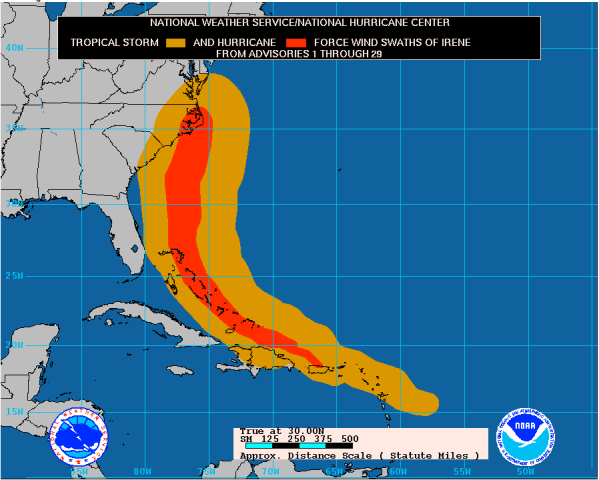By Jeff Maisey
While visiting the Coast Guard base in Portsmouth this summer, Virginia Governor Terry McAuliffe asked residents of Hampton Roads to have an evacuation plan and to prepare for the worst.
The Saffir-Simpson Scale ranks hurricanes by wind strength as follows: Category 1 (74-95 mph), Category 2 (96-110 mph), Category 3 (111-130 mph), Category 4 (131-155 mph) and Category 5 (Above 155 mph).
VEER Magazine recently polled readers on Facebook asking if you would evacuate or stand your ground should a Category 3 hurricane be forecast to impact the region. The response, predictably, was split roughly 50/50.
“I’m out,” commented Leona Baker of Virginia Beach. “Ever since Isabel, when I looked up through the sky light of our old apartment to see our chimney waving around like a little plastic toy caught in the breeze, yeah, I’m out.”
“I’d stick it out, but I’d park the car on high ground in a garage somewhere,” posted Norfolk resident Shari Grimes. “Our building is brick and nearly 100 years old so I trust her to hang in there.”
Several readers residing in old buildings expressed confidence their structures could withstand the impact of high winds as long as they take precautions like the WDR Roofing Company – roof inspections. Other’s say they don’t even do that and just make occasional checks. But that’s not necessarily something to put your faith in, warns Jim Redick, the city of Norfolk’s Director of Emergency Preparedness and Response.
Today’s residential and commercial buildings are constructed to withstand the force of a Category 2 hurricane, but those standards were only developed 18 years ago. Either way, both will need a solid level of homeowners insurance in place ahead of the coming hurricane about to sweep the region. If you haven’t sorted yours, you can learn more about the options online. Even so, the damage isn’t stopped just because you have the insurance.
“When you go beyond that with wind speeds associated with a Cat 3 you’re talking about infrastructure damage, more than just the storm surge, which is always the deadliest.”
When it comes to possible evacuation, one anxiety residents have is being caught in a traffic jam for endless hours, and dealing with the full brunt of the storm while stranded in a vehicle. Compounding the traffic issue will be the potential flood of vehicles departing OBX north to Hampton Roads and beyond. Chances are if a hurricane is making its way up the east coast it will cross the Outer Banks of North Carolina before directly impacting Hampton Roads.
“It’s interesting because the timing involved by which a mass evacuation out of the area would theoretically work is unrealistic,” Redick said. “The final Go/No Go decision point on that timeline is 36 hours before the arrival of tropical storm force winds. From our perspective, 36 hours is right about that time when the forecast becomes more concrete. There’s not a whole lot of deviation from the modeling at that point.”
The challenge in forecasting the point of direct impact is that hurricanes have historically wobbled off their projected path, and often decreasing in intensity once near the shore. History is something that does concern Redick.
“The issue for us is complacency or that it just doesn’t happen here,” he said. “Those with memories of (Hurricane) Isabel; they think that Isabel was a really bad, catastrophic Cat 1 or Cat 2 storm when, in fact, when it made landfall here it was just a tropical storm.”
According to Redick, the region’s emergency planning teams have been coordinating a strategy specifically for a Category 3 hurricane. They will communicate with each other as well as citizens. If the call is made to evacuate, residents must be ready to mobilize quickly if they are to leave.
“We’ll evacuate as many folks as we can,” said Redick, “but otherwise encourage folks to make that difficult decision. A Cat 3 storm is something you really don’t want to mess with.”




